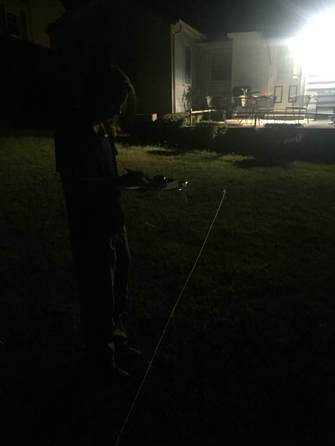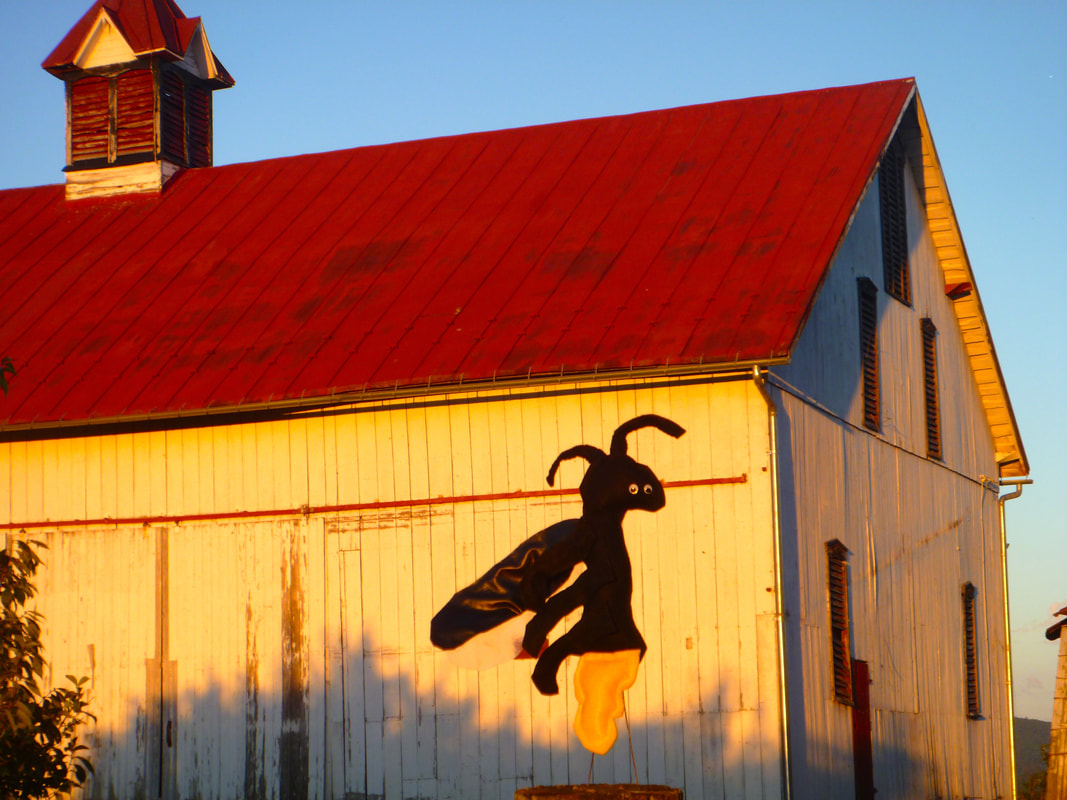 Night-time field work poses it’s own unique set of challenges. Have you ever tried to identify plants in the dark? Fortunately, this yard was easy. Lawn.
Night-time field work poses it’s own unique set of challenges. Have you ever tried to identify plants in the dark? Fortunately, this yard was easy. Lawn.
I am a firefly scientist. This hasn’t always been the case. My previous research organisms were small, non-descript moths; I can’t tell you what a delight it is to work with a flashy insect for a change. It seems like everyone has a firefly story: a memory of a particular night when the fireflies put on a spectacular display, or a confession of macabre childhood crimes perpetrated against firefly kind. Catching fireflies in the suburbs of Atlanta sparked my interest in entomology as a kid; now I’m lucky enough to catch fireflies for a living as a graduate student in the Department of Environmental Sciences at the University of Virginia.
Fireflies (or lightning bugs, depending on the viscosity of your sweet tea) are beetles in the family Lampyridae (apparently from the Greek lamprid-, “brilliant.” Firefly scientists are dazzlingly punny.) Many (but not all!) firefly species flash as a means of communication. These flashes range in color from amber to snot green to bright white, and they are the result of a bioluminescent chemical reaction that takes place in an abdominal light-producing organ called (brace yourselves) the “lantern.”
As the unofficial mascots of summer, fireflies remind us that beauty can arise from the most unexpected places (such as the backside of a beetle). For an insect, fireflies are downright charismatic, yet we are in the dark about some of the most basic questions about their biology. Are firefly populations increasing, declining, or holding steady? How do pesticides, light pollution, deforestation, “lawnification,” and other symptoms of urbanization affect them? To begin to answer these questions, I’ve been on a firefly roadtrip this summer surveying fireflies in yards across the Commonwealth. By tallying firefly abundances and species diversity near urban, suburban, and rural homes, I hope to shed some light on how firefly populations may be affected by land development in the Old Dominion.
Like some birdsongs and frog calls, firefly flashes play a role in species identification during courtship. They “speak” with a language of light, and each species has a unique pattern of dits and dots. There could be as many as 200 firefly species in North America, and I’ve seen about 8 species in Virginia on my roadtrip this summer. When I first started working with fireflies, their flashes all looked the same, slurring together like the syllables of a strange language. After many late nights spent in my lawn chair observing them, I’m becoming more fluent in firefly.
The most common firefly species I’ve encountered in my travels is Photinus pyralis, or the common eastern firefly. These fireflies begin flashing around sunset, flickering up from the grass like flames. Common eastern fireflies cruise close to the ground and are easy to catch with your bare hands. As dusk falls, an entirely different cast of characters comes out. Fireflies in a different genus called Photuris begin flashing around 45 minutes after sunset. Photuris flash patterns are dazzling and diverse. Some species twinkle like Christmas tree lights; others swoop like comets, curl like smoke, or seem to crescendo. A field full of chattering Photuris fireflies can rival a fireworks display. For me, every night this summer has been like the 4th of July.
Over the past two months, I’ve crisscrossed the state counting fireflies from tidy townhouses to snug subdivisions to sprawling farms. Working in yards is an unusually intimate form of fieldwork. I ring the doorbell just as the homeowners are sitting down to dinner, and fuddle around in their flowerbeds until well past the witching hour. Through it all, my homeowner volunteers (about 2/3 of who are Virginia Master Naturalists) have been generous, helpful, and understanding, even when my coffee gauge was perilously close to empty. Their curiosity and enthusiasm have inspired me to learn more about the natural world. I’ve genuinely enjoyed meeting every one of them, and I am extremely grateful for their support.
I’ve had such a wonderful time this summer, and wish I had time to count fireflies with all of the Virginia Master Naturalists. If I couldn’t make it to your neck of the woods, don’t worry! There are still ways that you can contribute to efforts to monitor firefly populations across North America. Citizen science groups such as Firefly Watch (affiliated with the Boston Museum of Science) have an open call for volunteers like you to count fireflies throughout the summer. The monitoring protocol is easy to follow and takes less than an hour a week to complete. Here is a link to the Firefly Watch website: https://legacy.mos.org/fireflywatch/
As my roadtrip draws to a close, I’d like to invite you to take a moment to notice the last fireflies of the season. What is the purpose of a firefly? “To make baby fireflies” is the answer many biologists would suggest. The firefly scientist in me agrees, but the part of me that has listened to a little too much late-night smooth FM while driving over the past couple weeks is starting to think otherwise. Why couldn’t it also be true that the purpose of the firefly is to be grabbed, squished, sequestered, left to smolder, to sear into one’s memory, so we sometimes pause on the patio in spite of the sweating and swatting and scratching to simply marvel: “Isn’t this lovely?”

